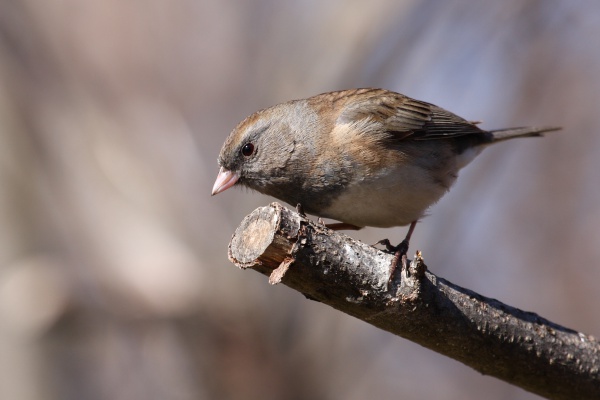Facts About Dark-eyed junco
The dark-eyed junco is a small, grayish sparrow commonly seen across temperate North America, extending its range into the Arctic in summer. These birds exhibit considerable variation in appearance, but adults typically feature gray heads, necks, and breasts, brown backs and wings, and white bellies. Males generally exhibit darker plumage than females. They measure approximately 13 to 17.5 cm in length and have a wingspan of 18 to 25 cm.
A key characteristic of the dark-eyed junco is its distinctive trill-like song, complemented by calls that include "tick" sounds and high-pitched, tinkling chips. Carl Linnaeus first described this species in 1758, assigning it the name Fringilla hyemalis. The species encompasses several subspecies, including the slate-colored junco, white-winged junco, Oregon junco, pink-sided junco, gray-headed junco, red-backed junco, and Guadalupe junco.
Dark-eyed juncos prefer breeding in coniferous or mixed forest areas across North America. They forage on the ground, consuming insects and seeds. Their nests are usually cup-shaped depressions on the ground, well-hidden by vegetation. The eggs are typically grayish or pale bluish-white with various spots. The female incubates the eggs for 12 to 13 days, and the young leave the nest between 11 and 14 days after hatching.
During winter, these birds migrate southward, although some populations remain in place or move to lower altitudes. In colder months, juncos are often seen in and around towns and are frequent visitors to bird feeders.

 Canada
Canada